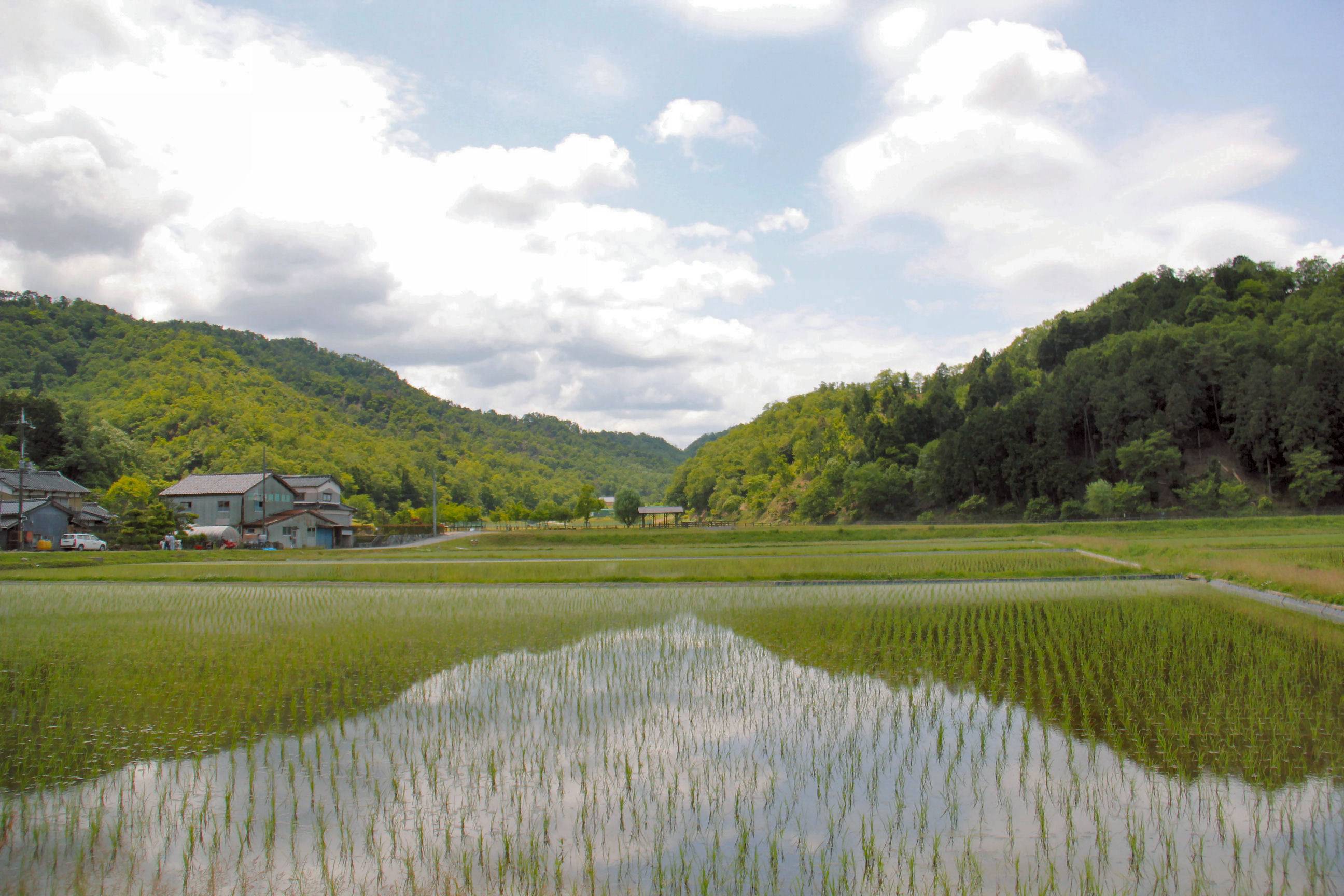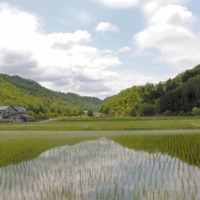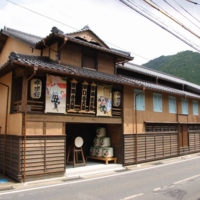The small coastal city of Toyooka has developed renowned presence by imaginatively developing the vitality of its economy and community.
“We have been making efforts to create new things to reinforce the local identity,” said Mayor Muneharu Nakagai in an online chat organized by the Japan Times Satoyama Consortium on Nov. 4.
“Satoyama” refers to rural areas bordering mountains and forests whose resources are sustainably maintained by its residents.
This coastal city in Hyogo Prefecture with a population of 80,000 won the Excellence Award in the satoyama category of the consortium’s Satoyama and ESG Awards this year for its extensive efforts in preserving the environment and culture.
Return of the storks
The Oriental white stork is the symbol of Toyooka’s rich natural environment, and its residents — especially rice farmers — have been dedicated to bringing the species back from the brink of extinction.
Toyooka was the last place in Japan where Oriental white storks lived before they became locally extinct in the wild in 1971. In 1965, seeing that the birds were in danger of disappearing, the city started to breed them in captivity with the aim of releasing the birds into the nature.
However, in order for the large carnivorous birds to live and breed in the wild again, the biodiversity of the environment needed to be improved. Shifting rice farming to chemical-free methods was one way to do that.
Nakagai said that there were two important elements in promoting organic rice farming: developing sustainable techniques and branding the product as chemical-free.
Because agricultural chemicals boost harvests, simply giving them up wasn’t a solution by itself. “Farmers in Toyooka — at first just a small number of them — started to try many different things. We also invited people who had good theories and a wealth of experience in organic rice farming as lecturers,” Nakagai said.
Eventually, 13 years after Nakagai began advocating chemical-free rice farming, methods for sustainable practices were formulated for the area. One of those methods developed, in 2004, consisted mainly of filling paddies with water in winter, when they are normally left to dry out after the harvest. This method has contributed to an increase in species such as earthworms, frogs and dragonflies that keep the soil healthy and provide food for birds.
Still, Nakagai said, it was not easy to gain the understanding of farmers, especially elderly ones who had sacrificed their own health by using pesticides to feed the starving population in the postwar period. “If we just told them that conventional methods are bad for health and the environment, of course they would feel offended. Instead of denigrating the past, one should try to shift their focus to the future,” he said, stressing the importance of sharing the understanding that what people have today is the fruit of labor put in by older generations and that it is the responsibility of people today to think of what they can do for the future.
In 2005, the first birds raised in captivity were released in Toyooka, becoming national news. “This gave powerful momentum to the project. The consumer market started to accept the rice, and more and more farmers began to join in,” Nakagai said.
Learning through drama
Another key element in Toyooka’s society and economy is the performing arts. The board of education in the city, home to the oldest theater in western Japan’s Kinki region, the Eirakukan, has made drama lessons part of the curriculum for all students in the sixth grade and the first year of junior high since 2017.
Nakagai strongly believes in the power of theater to help students nurture their empathy for others.
“Learning how to catch a ball helps you throw better. Playing a role of a bullied child in a drama gives students an instinctive understanding of what bullying is,” Nakagai said, stressing that students learn diverse perspectives not only by performing various roles but also through writing the plays themselves.
“In English, there is an expression, ‘to put yourself in someone else’s shoes,’ right? Theater allows you to do exactly that, and communication based on a fifty-fifty relationship starts from there,” Nakagai said. “Theater education enhances the democracy of mutual creation and problem-solving, not the rule of the majority.” He hopes that this unique form of education will bring more value and meaning to life in Toyooka.
Serving visitors all together
The Kinosaki International Arts Center (KIAC) was established in 2014 both as a venue for performing arts and as a facility offering an artist-in-residence program focused on the performing arts. Kinosaki, now a northern district of Toyooka, is known for its historic old town and hot springs.
Kinosaki’s small traditional ryokan inns cooperate instead of competing with each other, with the whole town serving visitors together. “For example, instead of serving coffee after a meal at a ryokan, the ryokan’s workers advise their guests to go for a walk and have coffee in a neighborhood coffee shop,” Nakagai said.
KIAC — and especially the annual Toyooka Theater Festival that it hosts — have brought new crowds to this welcoming town. This year, “the number of participants was limited to half capacity because of the COVID-19 situation, but about 4,730 people still attended the event and 73% of them stayed over in Toyooka. This contributied greatly to the local economy,” Nakagai said. Those involved in the event stayed 11 nights on average, totaling 3,500 people.
Starting next spring, Toyooka will also be home to a new prefectural college that focuses on the performing arts and tourism. It will be headed by Oriza Hirata, a renowned playwright, director and academic who has already moved to Toyooka with his family and brought his whole theatrical group.
In addition to over 60,000 tourists from abroad that Toyooka receives annually on average, the city is starting to see diverse short-term visitors and new residents attracted by what it has to offer.
“Those are interesting people — artists, young people in eccentric attire and so on,” Nakagai said. “The city is starting to change through the process of building mutual understanding with those newcomers.”
He pointed out that people are beginning to realize that they do not need to be in Tokyo to find work. “Outstanding talents will scatter across Japan and enhance the diversity of the whole country, making it stronger,” he said.
For more information please visit:
https://www.city.toyooka.lg.jp/shisei/tokei/1003134.html
https://www.city.toyooka.lg.jp/konotori/index.html
https://toyooka-kounotori.com/torikumi/kounotorinitsuite/
http://eirakukan.com/?page_id=159
This section, “Sustainable Japan,” features issues related to the environment and a sustainable society. It highlights the satoyama activities of companies and other organizations and also introduces municipalities and local companies promoting the beauty and excellence of the real Japan. For more information, see:






